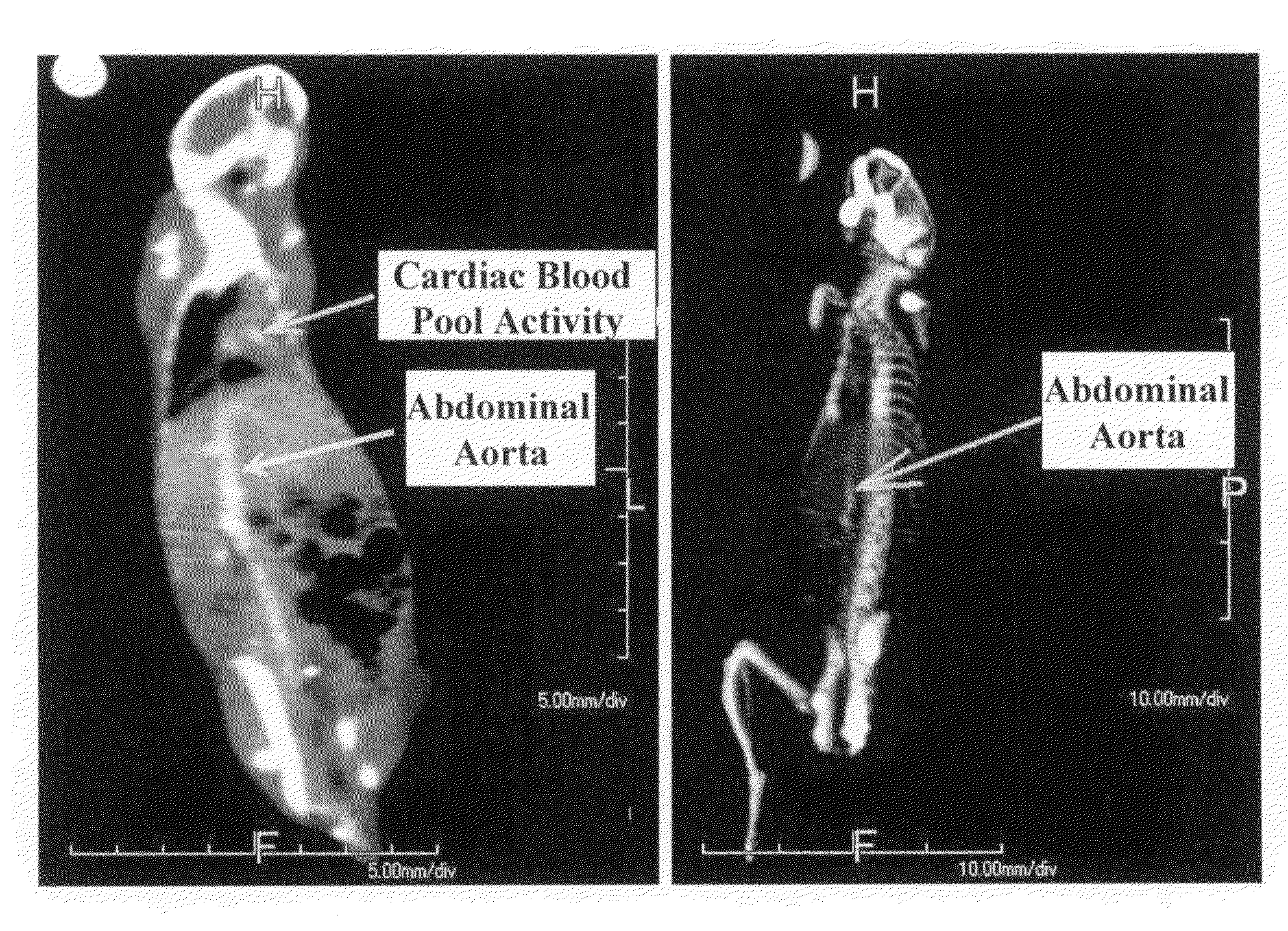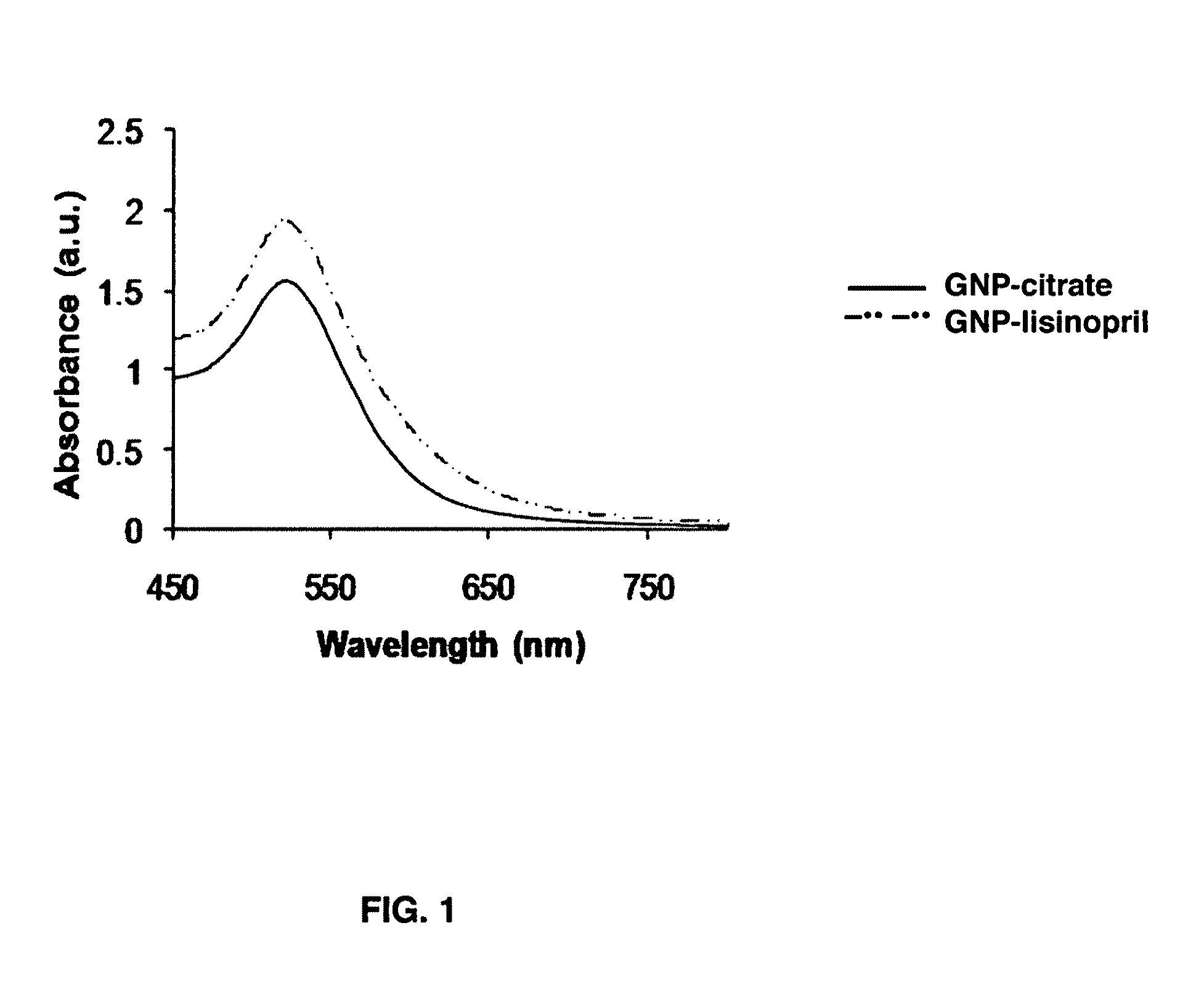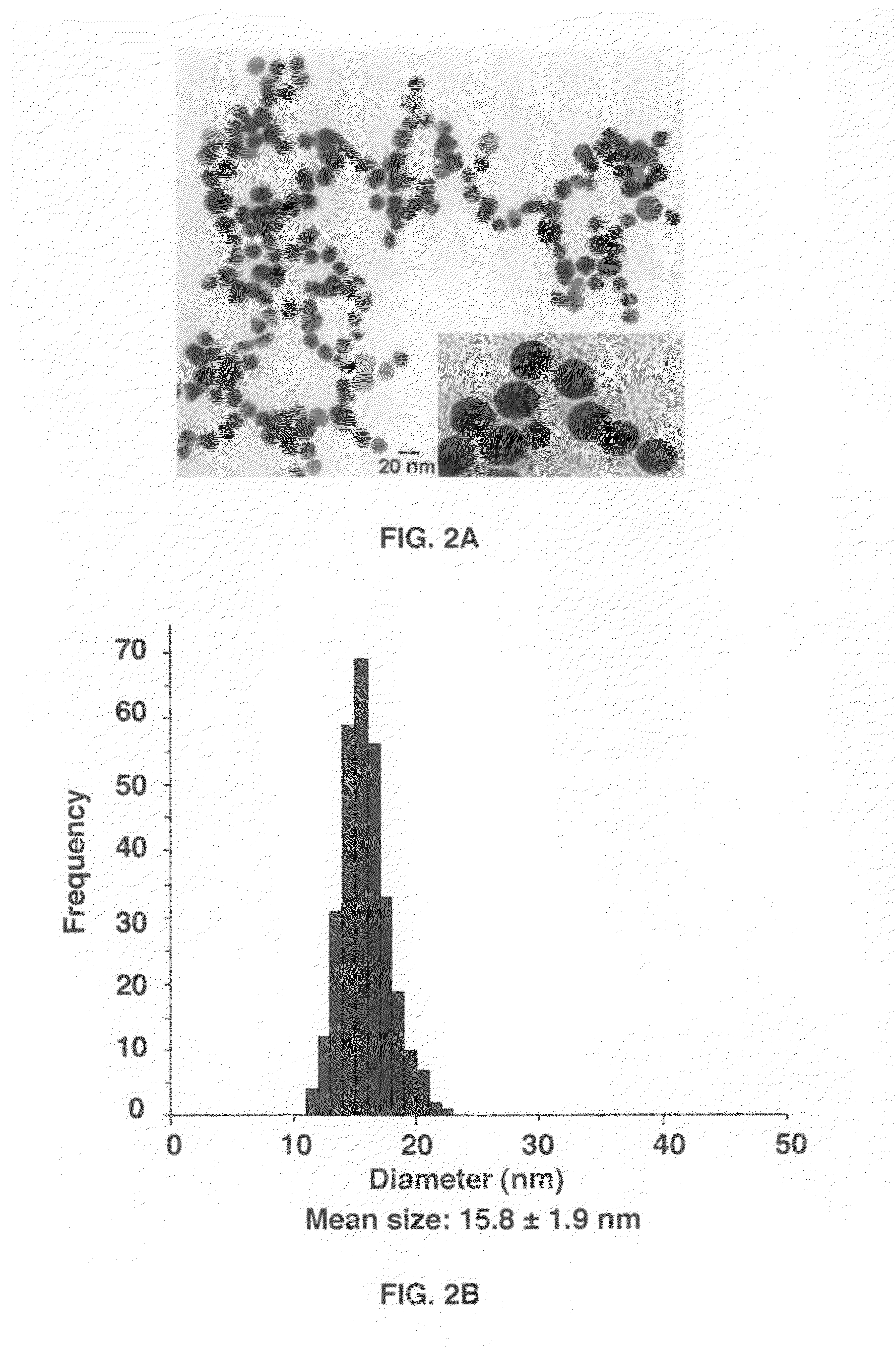Gold nanoparticle imaging agents and uses thereof
a nanoparticle and imaging agent technology, applied in the field of nanoparticles and nanoparticlebased molecular imaging, can solve the problems of ineffective detection of imaging modalities, inability to distinguish between benign and cancerous tumors, and inability to specific target patients
- Summary
- Abstract
- Description
- Claims
- Application Information
AI Technical Summary
Benefits of technology
Problems solved by technology
Method used
Image
Examples
example 1
Materials
[0039]All glassware used was cleaned with freshly prepared aqua regia solution (HCl / HNO3, 3:1), then rinsed thoroughly with ultrapure water before use. The water was distilled and subsequently purified to 18 mΩ ultrapure water quality using the Milli-Q academic system. Gold chloride (HAuCl4.H2O) and trisodium citrate (Na3C6H5O7.2H2O), obtained from Electron Microscopy Sciences, and sodium hydroxide (NaOH), from Fisher Scientific, were of analytical grade and were used without further purification. Tween 20 was purchased from Aldrich. Lisinopril dehydrate was obtained from Waterstone Technology LCC. The Millex-LCR 0.45 μm syringe filters were obtained from Millipore. The TEM carbon coated 200 mesh copper grids were purchased from Ted Pella, Inc.
example 2
Preparation of Gold Nanoparticles
[0040]The synthesis was performed using a modified Frens method[23]. In a 1 L 2-neck-round-bottom flask equipped with a condenser, 500 mL of 0.5 mM HAuCl4 in ultrapure water was brought to boil. Rapid addition of 26 mL of 5% sodium citrate solution (ncitrate / nAu=17.9) to the vigorously stirred gold chloride solution resulted in a series of color change from pale yellow to colorless, then light purple, deeper purple, turning reddish and finally to dark wine red. The color change occurred over 7 minutes. The solution was maintained for 15 minutes at boiling temperature and then removed from the heating bath. Stirring was continued until the solution cooled down to room temperature. The size of the prepared gold nanoparticles was 15.8 nm±1.9 nm according to the TEM measurements.
example 3
Preparation of Concentrated Solution of Lisinopril-Coated Gold Nanoparticles
[0041]Lisinopril dehydrate (330 mg, molar ratio of lisinopril / GNP: 4.02×105) was dissolved in 10 mL of water adjusted to pH 11 using 2 N sodium hydroxide.[24] The resulted lisinopril solution was added to a solution (525 mL) of citrate-stabilized GNP solution previously prepared (15.8 nm, 3.54 nM) while strongly stirring in a 1 L beaker. A certain amount of 2 N NaOH was then added to keep pH around 11. The reaction was kept under strong stirring overnight at room temperature. The lisinopril-capped gold nanoparticles solution was centrifuged several times at 31,000 g for 45 min. at 4° C. and redispersed in basic water (pH 8-9) in order to remove the excess of lisinopril and the exchanged citrate molecules. This purified lisinopril-capped gold nanoparticles solution was used for all the characterization techniques. Concentration of these lisinopril-capped gold nanoparticles was performed by centrifugation at 1...
PUM
| Property | Measurement | Unit |
|---|---|---|
| diameter | aaaaa | aaaaa |
| circulation time | aaaaa | aaaaa |
| diameter | aaaaa | aaaaa |
Abstract
Description
Claims
Application Information
 Login to View More
Login to View More - R&D
- Intellectual Property
- Life Sciences
- Materials
- Tech Scout
- Unparalleled Data Quality
- Higher Quality Content
- 60% Fewer Hallucinations
Browse by: Latest US Patents, China's latest patents, Technical Efficacy Thesaurus, Application Domain, Technology Topic, Popular Technical Reports.
© 2025 PatSnap. All rights reserved.Legal|Privacy policy|Modern Slavery Act Transparency Statement|Sitemap|About US| Contact US: help@patsnap.com



